It took me so long to commit to the idea of buying a Zeiss ZM 50mm Sonnar. I must have hanged my mouse over a buy-it-now button of some sort countless times. Something just kept changing my mind at the last minute. Just recently, I decided enough was enough, I was going to end this cycle of indecision, bite the bullet and just try one. And you know what, my only regret was not buying the damned thing sooner.
The ‘Carl Zeiss C Sonnar T* 1,5/50 ZM’, to call it by it’s given name, or ’50mm C Sonnar’ as I shall refer to it throughout this review, is somewhat of an enigmatic lens… or at very least it’s a divisive lens. To my knowledge, there is very little else like it on the market. It’s a modern lens, with modern coated glass yet it’s optical formula is supposedly closely based on the early 1930’s Sonnar design. There are plenty of lenses that carry the Sonnar name, my Contax T3 has a 35mm 2.8 Sonnar, and even my Sony A7s spends most of its time sporting a Sony made Zeiss designed 55mm f1.8 Sonnar. Both of these lenses are superb in their own right, and arguably fairly short of objective flaws. The Zeiss ZM 50mm C Sonnar on the other hand, is not so flawless; not by a country mile
The ‘Sonnar’
Now, I don’t claim to be an expert in the field of optical formulae, in fact in truth I don’t really find it all that interesting a subject (probably because I don’t understand most of it). But, when it comes to the Sonnar lens design there is an interesting nugget of info that gives context to the objective qualities of the three lenses I’ve just mentioned. The Sonnar design is apparently at its best used in lenses that have smaller maximum apertures. The little lens on the Contax is objectively very good, in part I surmise because it’s only a f/2.8 lens. The Sony made Zeiss designed 55mm f1.8 is a technically stunning lens, but to make it such stunning lens it apparently needs 3 aspheric lenses, and the Sonnar design flipping backwards (thanks to Dave Lam for that latter piece of head-scratch-worthy technical knowledge).
Of course, the little Zeiss 50mm C Sonnar isn’t blessed with all these aspherical elements, nor does it even have any modern fancy floating elements like some of its modern fast 50mm counterparts. In fact, as mentioned, it’s design is supposedly a lot more like a simple old fashioned Sonnar. And yet despite this, like some of its elderly relatives from the 1930’s, it still has a f/1.5 maximum aperture. The outcome of this is what many would consider an objectively flawed lens. A lens that some would say, due to its old fashioned design is quite testing to use in the field and can quite readily result in images that are soft or in other ways degraded when compared to the photographic outcome of using more modern lens designs.
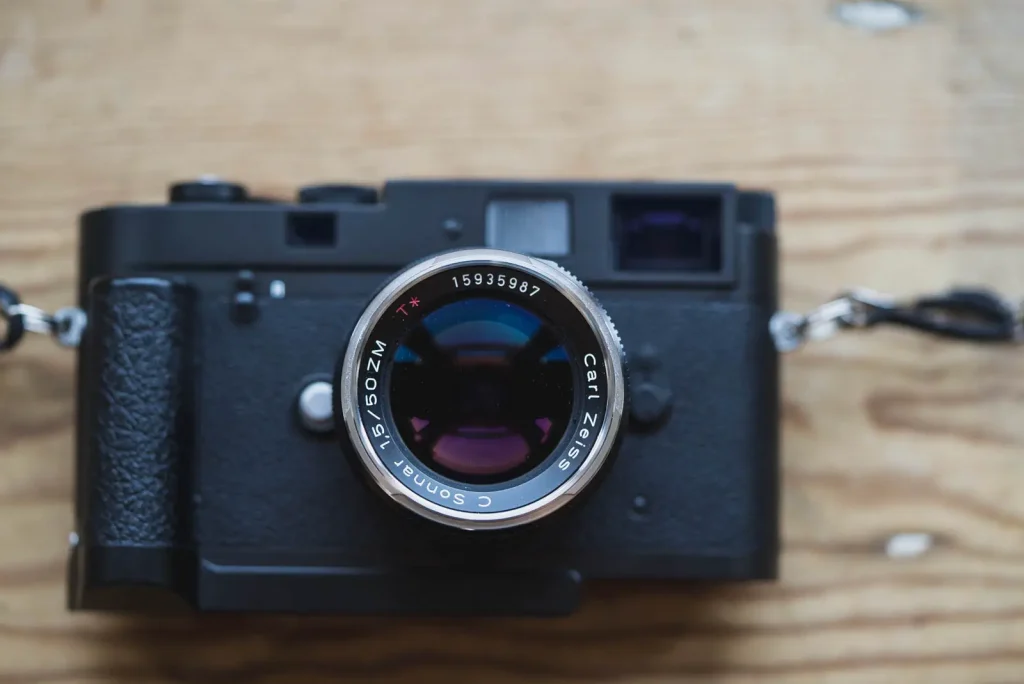
So surely if this lens is flawed, it’s a non starter? Well, as I conclude in my post about defining the perfect lens, optical perfection is not necessarily a prerequisite for a good photo. In fact what’s more important, is what I describe in that post as a harmonious balance between all the elements within the construction of a photo. And therefore what’s more important in terms of lens choice, is that the chosen lens is suitable for the subject and desired final outcome. You can read much more waffle on that subject here.
What Zeiss say about the ZM 50mm C Sonnar
plaWhat’s interesting about the 50mm C Sonnar is that – reading between the lines a little – the above is almost exactly what Zeiss claim about it. What Zeiss claim is that the ZM 50mm C Sonnar is in fact not ideal for all subjects. They claim it might be considered more ideal for portraits or for subjects where bokeh, shallow depth of field and perhaps the capturing of atmosphere are more important goals than technical perfection. They also say that if you are looking for technical perfection their ZM f/2 50mm Planar is perhaps a better choice.
This is all of course reflected in the chorus of users and testers of the lens. Search the Internet and you’ll find no end of advocates and detractors that all say pretty much the same thing about the 50mm C Sonnar, all shrouded in widely varying personal preference. The problem is, only a select few of these preferences come with enough context to extract a basis for the opinion. All of this can quite easily make the idea of buying one of this lenses quite a difficult conclusion to come to…
My own indecision about the Zeiss ZM 50mm C Sonnar
The problem I suffered when trying to decide about whether or not to buy one of these lenses was a nagging inside my head that I know all too well as the debate between the two halves of my brain. The one half – the creative half – acknowledges the aforementioned idea that a perfect photo is not necessarily derived from a perfect lens. Whilst other half – the measured, more grounded, fastidious and even perhaps slightly anally retentive half – argues that it’s better to have a lens that’s closer to perfect as it’s less likely to cause flaws in a photo.
On this occasion this argument was so persistent that it prevented me from forking out for the Zeiss ZM 50mm C Sonnar for about 2 years. To be fair to my brain, whilst it does quite frequently turn out to be wrong or mislead, on this occasion the points the fastidious side had to make in opposition to the purchase – on the face of it at least – seemed quite valid. The first problem, or perhaps the most obvious question, was whether or not I even needed a 50mm as fast as f/1.5…?
Do I need a fast 50mm?
My previous everyday 50mm was a Leica 50mm Summicron, an f/2 lens whose character I was happy with and that I didn’t find imposed too many limitations on me. The problem was, there were these infrequent but nonetheless significant occurrences when I’d go out, want a 50mm, and not feel the Summicron was fast enough. To remedy this last year I bought a 50mm f/1.1 Voigtlander lens. It’s my opinion that the Voigtlander is a great low light lens and as such it made a great part-time-partner to the Summicron. The problem was, it’s massive, so after the novelty of having such a fast lens wore off I tired of taking it out. I just prefer my cameras to be as small as possible; that is after all the basis this entire blog is built upon!
A one lens set up
Additionally to this, I find it a bit mentally cumbersome having an extra lens for those odd occasions I needed the extra light gathering power. It’s much easier to just have one lens that fits a wider range of purposes. By having two lenses, I’d sometimes fret about whether or not I was going to regret taking the one I’d chosen.
By the merit of these two justifications, I eventually came to the conclusion a single smaller faster lens was the solution. Unfortunately by the time I’d come to this conclusion I’d read far too much about the Sonnar. Specifically the reports about the focus shift, claimed “softness” and the 0.9m minimum focusing distance. Because of these factors the ZM 50mm C Sonnar just seemed like it might be the wrong choice. Reviews about it just read like it’s some sort of fringe usage lens, only really suitable for people looking for a very specific look. On top of this, I’d also been thinking about a Leica Summilux and a Voigtlander 50mm 1.5, though neither had inspired a purchase. The extra investment for the ‘lux, and the size of the Voigtlander put me off, not to mention the fact that every time I thought about buying any fast 50, the 50mm C Sonnar popped back into my head with this big fat “maybe” hanging over it. In response to all this going around in circles, for a good while I just stuck with the Summicron.
Of course, eventually I buckled and just bought the ZM 50mm C Sonnar. Almost amusingly in hindsight, the thing that tipped the balance and made me decide to buy one wasn’t actually the look of the images. I was fascinated by the character of this lens, but to a greater degree, buying into it actually felt as much of a of a gamble than anything else. The safe bet that swung the decision to buy the 50mm C Sonnar was quite simply the size of the thing.
Handling and size
According to Zeiss the ‘C’ in ‘Carl Zeiss C Sonnar T* 1,5/50 ZM’ stands for both “compact” and “classic”. The old lens design I’ve mentioned, and all of the character traits I will come to talk about throughout this review, are no doubt what they mean by the word “classic”. The word “compact” is of course a much easier concept to define, and define it Zeiss certainly have with the 50mm C Sonnar. I must say, this is especially noticeable to someone like me who’s previous fast 50mm was a Voigtlander 50mm f/1.1. For its specification, the 50mm C Sonnar really is a tiny lens, and for its size alone I cannot find fault.
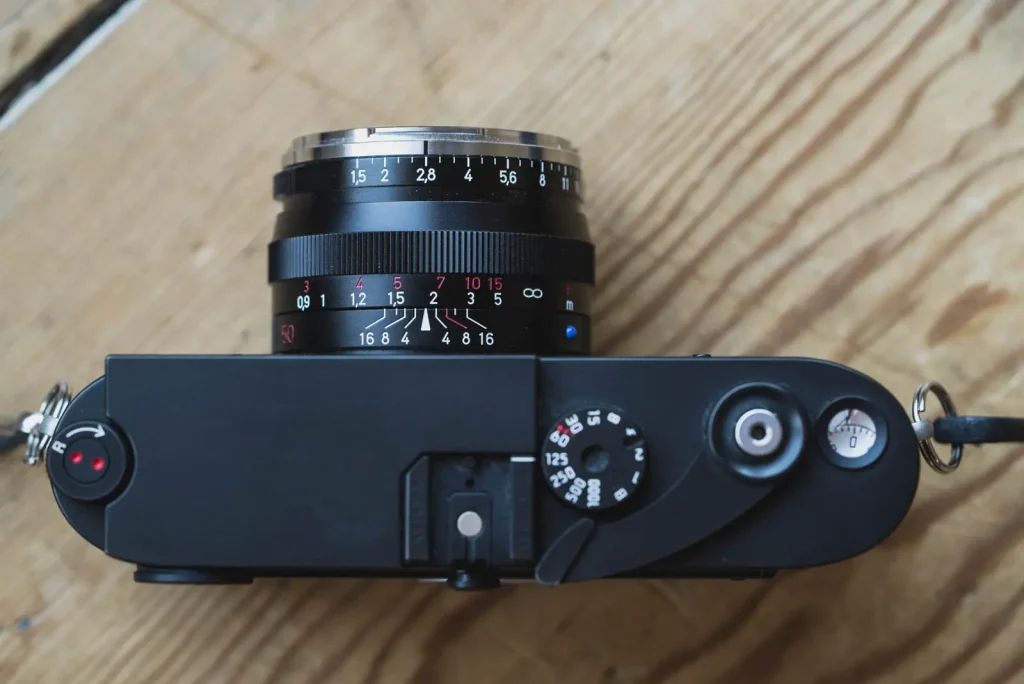
Focusing and feel
Unfortunately, and slightly frustratingly for me, I’m not the biggest fan of the focusing bump. To me a focusing tab needs to be a proper tab, something holdable, something that can be gripped. Generally, I also prefer lens to have a tab rather than not. In the case of the 50mm C Sonnar though, I think I’d rather it didn’t have anything at all. The bump itself is fairly ineffectual and sometimes it just feels like it’s more in the way than actually useful – it also meant I had to hack my Taab for it to fit.
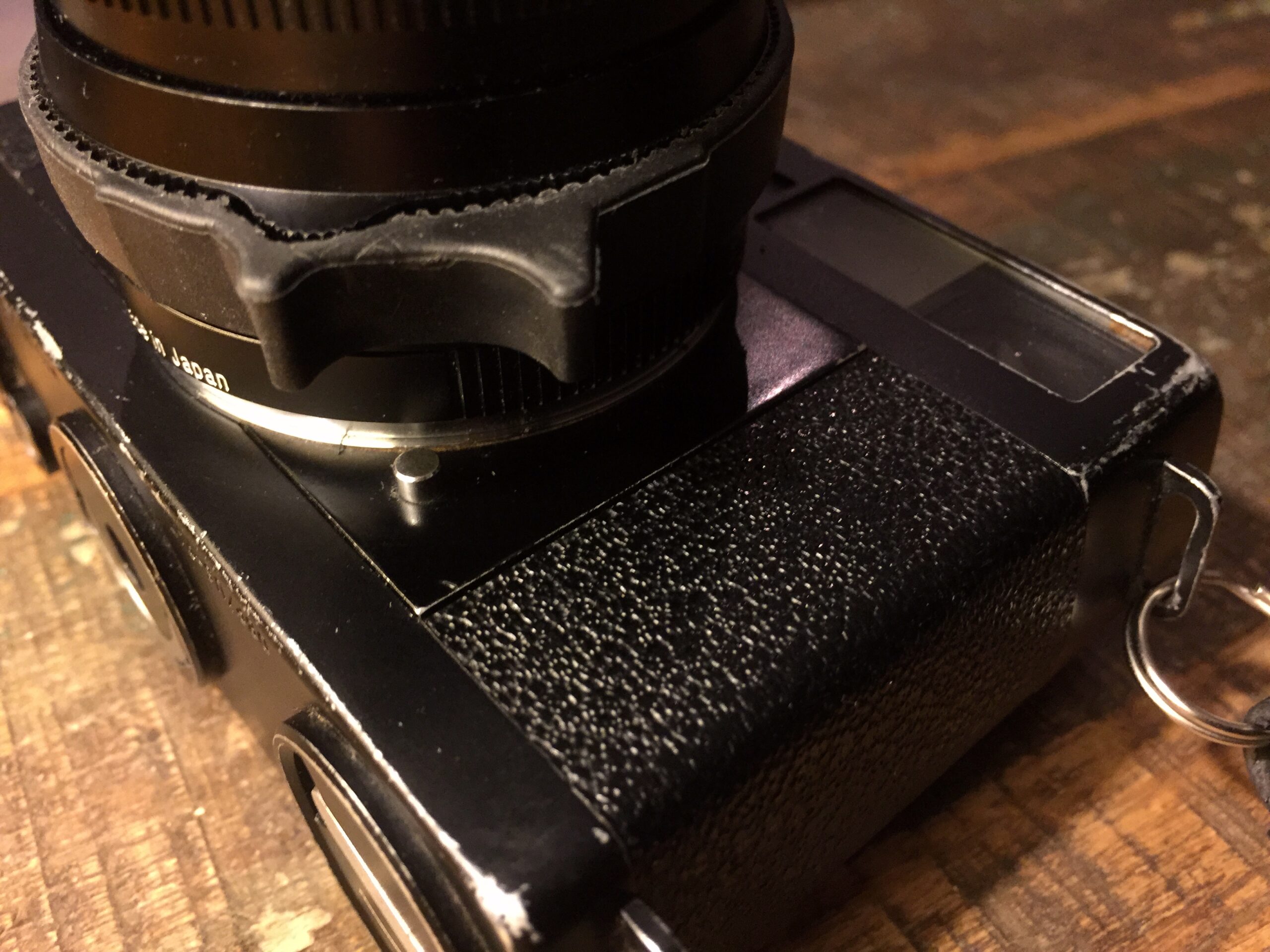
Thankfully, other than the bump, handling is as much as I could hope for really. I know everyone says the same sort of thing about these lenses. “Great but not as smooth as a Leica” being something I’ve read more times than I could count, and I suppose it’s true, but I’d be hard pushed to notice or care about any difference between it and a Leica lens when using it. Aperture clicks are also lovely and clicky too. They come with three clicks per stop, which is I suppose useful, though I personally don’t tend to use my cameras in a way that I benefit from such precise exposure control.
0.9m minimum focus distance
Of course, the focusing bump isn’t the only shortfall of focusing with the 50mm C Sonnar. Another point of concern I held before I bought it was the 0.9m minimum focusing distance. One of the biggest “flaws” of the 35mm rangefinder is the 0.7 minimum focusing distance. With 0.7m I find myself frustrated sometimes that I can’t get close enough, so I was more than concerned that 0.9m would be a limitation too far. Now I have the lens I can confirm that I do indeed find it annoying sometimes. But actually, it’s really not as big a deal as I thought it might be.
One of the interesting things about rangefinders is that they force limitations on you. For those who don’t shoot them, this is one of their weaknesses. Some folks just can’t fathom why we rangefinder fans like to make our lives so much harder. Of course the reality is many of us thrive on the simplicity and limitation. My primary camera wouldn’t now be a Leica M-A if I didn’t.
The 0.9m minimum focus distance just becomes another limitation to work with. And actually it has to some extent made me assess further the purpose of a 50mm lens. Shooting a portrait at 0.9m forces you to think more about context when framing people. You can’t as easily just frame tight in and treat this lens as a portrait lens, you have to shoot the context. And actually that’s what suits this lens the most. It does such a good job of capturing atmosphere, it’s a shame not to take advantage of that.
That said, as you will discover later in the post, I have been using it as a portrait lens. In fact, I’ve just been cheating slightly. Since I’m not all that fussed about ultimate resolution, I’ve actually taken to using the 75mm framing lines as a guide for portraits then cropping in post… Make of that what you will, but it suits my needs just fine for when I don’t have my 90mm to hand, or indeed just fancy the look the 50mm C Sonnar gives…
Ultimately then, I can definitely say that now having used the lens for a while, owning just a single small lens – even one with the 0.9m focusing limitation this one imposes – is definitely for me. Of course with this particular small lens comes the focus shift and a whole host of character traits that all combined, felt like a gamble … So the question I suppose you might want to know the answer to is whether or not this gamble paid off?
Focus shift
If you’ve spent any time reading about focus shift and the Zeiss ZM 50mm C Sonnar, you will know there is a lot of confusing and sometimes contradictory information out there. Well, I’m sorry to say that on the one hand I am going to add to that… Though hopefully I can also shed a little light on the reality of it all too.
Back in March I went to the Photography Show at the NEC in Birmingham. Since I find much of the show quite dull, it’s fair to say that one of the only reasons I went this time round was to hassle the folks on the Zeiss stand. There were a few things I wanted to ask them, but the one thing I really wanted to learn was how exactly the 50mm C Sonnar is calibrated when it leaves the factory floor today. But before I tell you what they told me, let me just explain the background to the question.
Focus shift and the Zeiss ZM 50mm Sonnar
As mentioned, the sonnar is based on a very old lens design, a lens design that inherently suffers with focus shift. It also happens to be particularly susceptible to it because of its wider f1.5 aperture. What this means for the 50mm C Sonnar is not just that it suffers with focus shift, but in a world where modern lens design with floating elements and such have prevailed over these older designs, its reputation for focus shift often seems to somewhat precede almost any other conversation about it (as indeed it as in this review).
What is focus shift?
For a bit of background as to what causes focus shift, you can read my post about the terminology here. In short though focus shift is where the point of focus moves back or forward as the aperture of the lens is changed. This doesn’t matter so much with cameras where you can confirm focus through the lens, but on rangefinder cameras it means that the distance that’s in focus might not necessarily match what the rangefinder indicates is in focus.
This might sound like a disaster, but all that it really means is that lenses that suffer the affects of focus shift are calibrated for perfect focus at a distance and aperture that give the best compromise across all focused distances and apertures. Unfortunately, where a compromise is made, objective “perfection” in the lens design can be seen to be lost.
A simple question, many answers
The reason I wanted to ask Zeiss this question is that if you spend any time reading about this online, the answer to how the lens is calibrated becomes more and more confusing. Some websites seem to say that the standard out of the factory calibration of the 50mm C Sonnar gives accurate focus at f/2.8 at 1 meter – many of these claims are backed up with test charts. This is said to mean the lens front focuses at wider apertures up to f/1.5 and therefore back focuses at smaller apertures. So that’s the answer then, what’s the problem?
Well, where things get confusing is that some other websites then claim that the standard the out of the factory calibration has now changed from accurate focus at f/2.8 at 1 meter to accurate focus at f/1.5 at 1 meter. Which might solve the problem of front focus wide open, but also means that the problem of back focus is even more severe, and indeed can apparently make focusing difficult until you get to at least f/8.
In theory this means that early lenses are f/2.8 calibrated and later ones are f/1.5 calibrated. The problem is, it’s very hard to find any reference to Zeiss saying this themselves, which is why I wanted to ask them directly. All this information around the web had led me to be so confused, there was no way I could even conceive of putting my money down. I wanted a straight answer right from the horses mouth… And do you know what, the info they gave me differed again.
What Zeiss told me
I asked the first person I met at the Zeiss stand at the photography show, unfortunately their specific expertise seemed to be more in the fancy Sony mount “Loxia” lenses. Short of having the answers I required she disappeared off behind the scenes and returned with a nice chap with a German accent to speak to me. What this chap told me, and indeed confirmed by email to me after the day is summarised by the following:
The out-of-factory adjustment of the 50mm C Sonnar when combined with a perfectly adjusted camera rangefinder will show about 1.5cm front focus at f/1.5 and 1m focusing distance, perfect focus at f/2 and 1m focusing distance, and about 2-3cm back focus at f/2.8 and 1m focusing distance.
He then went on to say that Zeiss found this out-of-factory adjustment to be the best compromise for this lens type for nearly all typical applications. He also said that it was possible to have the lens adjusted to however you liked by Zeiss, but that individual tests in typical applications with an individual camera body are essential prior to making any decisions about having a lens calibrated.
A bit of clarity…?
I personally felt that this gave me a little clarity on the subject. I suppose, since the answer I got from Zeiss didn’t correlate with what I’d read online, it could have taken it as adding flames to the fire of confusion. But for me, because it came from Zeiss directly, and not from a third party, it gave a sense of knowing something hopefully closer to the facts, rather than being confused by the hearsay.
The problem was, I still remained a touch uncertain about actually putting my money down. What I realised was that whilst I now knew this information – even without the discrepancy between various sources playing on my mind – I still didn’t know exactly tell how much this focus shift was going to impact my photography. Additionally to this, when reading about people’s subjective thoughts on the focus shift “problem” all I ever seemed to read were reports and reviews giving advice about living with the focus shift, and how to work around the problems it causes. All this information just still added up to a lens that looks like it takes superb photo, but sounds as though it’s massive faff to achieve said superb photo. Of course, in the end I got fed up with deliberating, and thanks mostly to the nice German man from Zeiss’s comments, I bit the bullet and bought one!
Focus shift in real life
As you might expect, nothing can make up for real hands on experience with this lens. Having now had said hands on experience, I can tell you two things that I’ve discovered; two pieces of information that I wish I’d had spelled out to me more fervently whilst my indecision was plaguing me.
1. When I test it, I can see the focus shift
I don’t have a digital rangefinder, nor do I have test charts or any specialist testing equipment… But, if I put the 50mm C Sonnar on my Sony A7s and point it at my computer keyboard at about a meter distance, focused on one of the keys at f/2, when I stop it down or open it up I can see the point of focus move to either a key behind or a key in front respectively. This amount of shift was way more than I’d thought it could be.
When I first did this test, I decided I was going to include photos in this review. But then I remembered one much more important discovery I’d made prior to doing my tests.
2. When I use the lens I have, I don’t suffer the focus shift!
Now, I should just clarify that statement by saying that clearly, I am of course suffering the affects of focus shift in my photos. It is after all a fact that it is occurring, I’ve tested it, I can see the lens does it. But, much more importantly, in the results I’m getting, I’m not feeling impacted negatively by said focus shift. In fact, more than that, I can’t readily detect its occurrence in my photos, and actually that’s even without attempting to compensate for it.
I’m sure there will be many people out there reading this thinking I must be mad. Many people who’ve tried this lens and seen and experienced focus shift when using it. But that’s my point, I have seen it, I know it happens, I’ve tested it and have seen it with my own eyes. But when I’m actually taking photos I’m not testing it, I’m just shooting with it, and when shooting with it, I don’t notice its impact. This of course might just be down to me shooting film and not digital, which would be more sensitive, or at least less forgiving than film. Or it could be that I personally am more forgiving because my requirement for “sharp” is not as high as some peoples. Or it might just be down to the way I use the lens (a subject I will come to later) but either way, I don’t find bother with it.
So what does this all mean?
Well, in short it means that if you’re looking for technical perfection this lens might not be the ideal. If for example your photography somehow requires precision focusing at close quarters with wide apertures, and yet for some reason you still choose to use a rangefinder under more controlled circumstances you might find issue with the 50mm C Sonnar.
But if like me, you just want to take nice photos of your family, and the wider day to day world around you, the chances are the 50mm C Sonnar’s focus shift isn’t going to bother you too much. Not to mention the fact that if you are still concerned, the measures most people suggest for avoiding the effects of focus shift just come down to a little bit of basic understanding on one hand, and being realistic in your expectations on the other.
Living with the focus shift – The back focusing
As I say, when I’m shooting I don’t really think about dealing with the problem of focus shift, but if you are concerned, there are ways to approach shooting this lens that will reduce, or even eliminate the possibility of shift altogether. The first solution deals with the back focus problem at smaller apertures and just involves a bit of basic understanding about how depth of field works. I think it’s quite common knowledge that what’s in-focus extends further beyond point of focus than it does behind it. Because the 50mm C Sonnar back focuses from f/2.8, the extension of focus in front of the point of focus is smaller. As such, there is no real trick to dealing with the back focus, in theory all you need to do is just focus slightly more forward within the plane of what you want in focus.
What helps me personally is that I think I’ve probably always over compensated in this regard, as such so I can quite comfortably say I that haven’t changed my shooting habits at all, and have still been fine.
Living with the focus shift – The front focusing
Dealing with the potential for front focus at wider apertures is where a little bit more of a realistic expectation comes in. Focusing at 0.9m at f/1.5 is hard even with a lens that doesn’t focus shift. Depth of field will be as little as a few centimetres, simply swaying backward or forward ever so slightly could have as big an impact as the focus focus shift caused by this lens. And that’s only taking into account your movement. If your subject is moving too, at these sorts of apertures and distances, luck is as much a part of the equation as anything else anyway. This next shot is an example of where I thought I’d try shooting at f/1.5, and just missed focus.
If you are worried about this, you have to ask yourself, just how often do you actually need to shoot at f/1.5, and what are your reasons for doing so? If your aim is to shoot in as low light as possible, then all of the risks and usual concerns about shooting in lowlight apply anyway. Focus is just as easily missed through inadequate light, not to mention the fact that higher ISO’s and wider apertures bringing their own softening effects.
As such, when shooting a portrait at wide open 0.9m in low light with fast film, just how much is this minor focus shift actually going to further detract from chances of obtaining a perfectly sharp photo?
Embracing the imperfection – The positive side of a bit of focus shift
Of course, alternatively, your aim might be to achieve a look through shallow depth of field, and if that’s the case – given a few more of the facts – you might be somewhat more willing to forgive the 50mm C Sonnar it’s focus shift shortcomings anyway…
The reason the 50mm C Sonnar “suffers” focus shift is because of a flaw in its old ‘Sonnar’ design. It is this flaw that causes spherical aberrations, and it’s spherical aberrations that cause the focus shift. But spherical aberrations are also guilty of impacting quite strongly on bokeh. You can read more about these aberrations in my posts about sharpness and bokeh – though be warned, I go on a bit in the latter. To summarise what I say in those posts, in a lens like the 50mm C Sonnar, where the under-correction of spherical aberrations results in focus shift, it also impacts positively on the bokeh in the background out-of-focus of photos taken with it. That is to say, where this optical imperfection takes away technically accurate focus, it also brings positive attributes in terms of bokeh and subject background separation.
Bokeh
A lot of the reputation for this len’s positive character traits seem to revolve around it having good bokeh. As such bokeh is perhaps the logical place to start when talking about the 50mm C Sonnar’s character. That said, I want to insist at this point that bokeh alone is far from the full story in terms of the character of this lens.
What I think is especially interesting about this lens and the subject of bokeh starts with is how it’s almost universally spoken about as having wonderful creamy bokeh, and yet despite this there are some people that report bad or fizzy, distracting bokeh. There is of course good reason for this. It does quite readily create quite lovely smooth creamy bokeh, but like most lenses it is indeed also capable of distracting bokeh given a specific set of circumstances. You can see an edginess in the background of both the previous photo and this next one.
The problem for the 50mm C Sonnar is that this is just the worst of specific set of circumstances a specific type of photographer will throw at it as part of a process of judging it. What I find interesting about this is that in the same way as this lens falls over when you scrutinise it in terms of focus shift, it is also capable of falling over when it’s bokeh is scrutinised. Whereas if you just use it normally and realistically, you are unlikely to ever really see either negative attribute – I shall come back to this point later.
The style of shallow depth of field
Just to go off on a hopefully relevant tangent for a moment… Shallow depth of field has become somewhat of a style in its own right. There are many photographers who like to create a narrow depth of field look in their photos that sits outside of a necessity to shoot at wider apertures for low light. Some photographers like to use wider apertures to create a sense subject background separation, even outside of portraiture where this style is perhaps more traditionally used. I have no problem with this as a creative methodology in its own right, but unfortunately, what sometimes comes with this type of photography is a type of photographer who obsesses about bokeh to what I see as an almost unhealthy extent. This obsession breeds what I call the “hypocrisy of the bokehphile”. This is where the attention of the photographer shifts from the in-focus to the out-of-focus – the very thing that is supposed to be ignored. In turn this goes on to breed unnecessary over-examination of lenses ability to separate subject from background and render out of focus elements smoothly. I go into much more depth on this subject in my post about bokeh if you’re interested.
I mention this here as it seems to me that since this lens has a reputation for having great bokeh, it is seemingly put under even greater scrutiny by the bokehphile. It’s the bokehphile who picks up this lens, sets it to f/1.5 and goes about taking photos of people in woods with dappled sunlight in the background expecting the out of focus to be perfectly smooth. Of course the outcome isn’t what said bokehphile hopes and they find a slightly fizzy and confusing background in some of their photos.
This is of course a reality of almost any 50mm lens. Shot wide open the broad majority of 50mm lenses suffer some degradation in the way out of focus highlights are rendered. This is again something I talk about in my post about bokeh – search for the word futile, follow the link and you’ll see what I mean… Anyway, the point I make in that post is that it’s shortsighted to claim any lens has universally “good” or “bad” bokeh, and is much more important to be specific and give context to comments on the subject.
Specific comments on the 50mm C Sonnar’s bokeh
Being specific about the 50mm C Sonnar I would say that it does indeed have a slight propensity to confused bokeh when shot wide open with things that are traditionally known to cause bad bokeh – dappled light through trees for example. Of course the reality is, even at f/1.5 bokeh is lovely in most normal circumstances, it has to be pushed to get that “bad” bokeh that you’ll sometimes find people mention.
In the larger majority of circumstances the 50mm C Sonnar will render the out of focus wonderfully smoothly. But if you’re in doubt, either don’t point it at things that cause “bad” bokeh or just stop down to f/2 where you can expect much smoother out of focus rendering in almost any circumstance
Subject separation
The way a lens separates a subject from a background isn’t just about the character of the bokeh. At the widest apertures the band of focus is of course quite slim, but more than that – thanks I suspect to the aforementioned under correction of spherical aberrations – what’s in focus seems to melt away to out-of-focus quite quickly. Now this could be said to make focusing this lens a touch harder, in fact it’s probably a greater factor in what makes focusing harder than than the focus shift. But, what this quite nicely aides is a sense of subject separation from the background. Even where the subject is quite close to said background, the appearance of separation from it remains great. This is even the case when the lens is stopped down somewhat. This positive subject separation is one of the big factors in what is often referred to as 3D pop – a subject I will get to later.
Sharpness
To comment on sharpness, it’s important to at least have an in-focus photo. As mentioned above, focus shift and the quick transition to out of focus can perhaps cause problems with sharpness at wider apertures. But, when sharpness is obtained – even at the wider apertures – in my opinion it’s more than satisfactory for the sort of subject matter I shoot.
What’s important to remember about the 50mm C Sonnar though is how sharpness is rendered. Zeiss themselves have referred to this lens as having a “rounded sharpness”. How I think this translates is that images are still sharp, but rather than rendering ultra high levels of fine detail through high resolution, the structure of detail is rendered with good levels of contrast. This couldn’t be more true than at wider apertures.
Take the above portrait of Emily, our apprentice at work. Shot at I think f/2, if inspected overly closely one might find resolution to be slightly lacking. Finer details are perhaps not rendered, well, finely. But viewed as a whole the high contrast gives the image a more than satisfactory perceived sharpness.
Then take this photo of James (34), who doesn’t quite have the youthful completion of Emily (18), and you can see the texture of his skin. The texture is defined by the lenses contrast, but thanks to slightly lower levels of resolution, the texture doesn’t appear bitingly sharp or overly defined in an unflattering way. Or as Zeiss put it the sharpness is “rounded”.
Stopped down sharpness
Stopped down, the story is the same but different. I’ve never seen a photo taken at any aperture with the 50mm C Sonnar where I’ve felt the detail to be too heavily defined. But stopped down there does appear to be a touch more resolving power. I’d still not class it as what people like to call “bitingly” sharp. “More than adequately sharp” is probably the best objective description I can give it, at least in the context of my needs.
Overall, I can certainly see why the Zeiss marketing department came up with the word “rounded” to describe the sharpness of the 50mm C Sonnar. Had I been sat around the table when they decided upon that word, I’d probably have pitched the word “organic” – though I guess that would probably not be quite technical enough. To me, it doesn’t ever feel like the lens is resolving like some of the 50mm lenses I’ve shot with lately – especially some of the modern digital camera lenses. But as I say, where it lacks resolution, it makes up for it with a sense of contrast that means subjectively speaking images don’t feel soft, but instead feel sharp in what I see as a more realistic way, perhaps even in a way that makes things feel three dimensional…?
3D pop
This concept of 3D pop is one of those minefields that causes all manner of smart arse to add overly complicated speculation to what creates an image that has an undeniably 3D look to its rendering. Of course 3D pop is just a made up thing, there’s no measure for it, it’s completely subjective, and sometimes it’s just as much derived from the light and shade within an image as anything else.
That said somewhat depending on how you define it, there are usually two key lens characteristics that are quoted as being responsible for creating a photo with a sense of 3D pop. Smooth bokeh and quick transitions to out-of-focus is one, and as previously alluded to, lens contrast is another.
Take the portraits of James and Emily above. The macro effect of higher lens contrast is an undeniable clarity within an image that helps the subject “pop”. Combine this with distinct subject from background separation and you have an image that will look 3D. Of course, in the case of these images, light and shade have definitely helped with defining the three dimensional nature of my subjects too – which I suppose emphasises the fact about “3D pop” being sometimes derived from light and shade. Here’s another few examples
What’s interesting about 3D pop is that I suspect some people would argue over which the main factor in creating it in the portraits I have used as examples. Some might say its the contrast, some the separation from background and some might speculate that it is down to little more than light. But one way or another taking many of the images in this post into account, it’s hard to ignore the fact that the 50mm C Sonnar is very good at aiding in the creation of the look.
Flare and light
Like most lenses the 50mm C Sonnar reacts to being pointed toward the sun or bright sources of light. My personal concerns in this area are usually around flare, or more specifically around the type of flare known as ghosting. My last lens review was on the subject of the 35mm v3 Summicron, a lens that ghosts with sometimes big red blobs central to the frame. Some people like this sort of thing, or at least don’t find it a problem. Unfortunately, it’s not ideal for someone like me who routinely points the camera at the sun and doesn’t like ghosting being too intrusive. Fortunately, with the 50mm C Sonnar, try as I might, I couldn’t get anything similar to happen. In fact, despite shooting into the sun quite regularly since I’ve owned the lens I am yet to see any real sign of ghosting at all. A very impressive feat I think. This next shot with the sun just out of frame is possibly the least desirable flare I have been able to create:
But, where there might be no ghosts, there is still a distinct and identifiable reaction to bright sources of light. Most noticeable at wider apertures there is a strong glow that emanates from bright lights and lowers contrast locally to them.
Were this an older, less well coated lens I suspect you would see veiling flare across the whole image, but thanks I suspect to lens coatings the effect is limited to a localised glow. The effect is reduced slightly by stopping down where the glow shrinks and out of it come the points of a star that match in number the amount of aperture blades.
To me this all adds quite a bit to the character of the photos, a character that is very noticeable in the photo below. Thanks to the way the lens has reacted to the light, the image glows in places and looks almost ethereal.
What’s interesting to me though is that whilst the above photo really shows off this ethereal look, actually, once you’ve seen the way the 50mm C Sonnar responds to light in this way, you start to recognise the effect in many other photos. The way all light is rendered by this lens – or at very least all higher contrast light – just somehow feels like it has a glow to it. The lack of ghosting, combined with this glow adds a great deal to the character of the 50mm Sonnar that I have so far described.
So are there actually any negatives at all?
I’m sure to anyone reading this who doesn’t like the 50mm C Sonnar, or prefers objective perfection in their equipment, much of I’ve said so far must sound like positive spin, or at least a view taken through rose tinted glasses. Well, of course it is, in fact using this lens feels a little like shooting with rose tinted glasses to me. But actually, my comments are only positive because I feel so positive about such a large portion of the photos I’ve taken. I do want to point out though, that however much I like it, I’m not blind to the failings, the biggest one I’ve so far witnessed being its sometimes visible problems with colour aberrations.
Colour aberrations
Shooting the 50mm C Sonnar I’ve noticed both longitudinal and lateral chromatic aberrations. The former you can see on the straw in this shot.
And the latter in the leaves top left of this shot.
The problem of longitudinal aberrations seems to be quite drastically reduced by stopping down. The first photo was taken at f/1.5, if I’d shot it at f/2 it wouldn’t have been a problem I don’t think. The biggest concern for me about these colour aberrations is not how they impact me, but more how they might if someone were to shoot with this lens if they primarily shoot digital. The effects of colour aberrations tend to be a lot less intrusive on film, something to do with the physical depth of the film emulsion. Fortunately for me, I don’t shoot much digital recreationally and don’t have plans to use this lens when I do. Not to mention the fact that I don’t shoot the lens wide open that much. Just beware of you’re a digital shooter or you have a penchant for wide open shooting, you might find some colour aberrations creeping into your photos.
Shooting realistically
Just before I conclude my thoughts on the 50mm C Sonnar, I just want to talk a bit about taking a pragmatic approach to shooting with it. People often seem talk about a necessity to be careful with this lens in a bid to avoid tripping over its shortfalls. For me the reality is less about taking care and more about shooting it in a realistic way with realistic expectations. To me, taking “care” implies that the shortfalls of this lens on a technical level are to be avoided. I don’t think this is the case. Being realistic, and understanding the lens, is just about using it appropriately and understanding what the impact of using it in various circumstances will be.
For example, If you push your luck and shoot at f/1.5 in the day time, in a wood, with dappled light in the background, you might find yourself with ever so slightly distracting bokeh. But of course, rather than shoot at f1.5, if you just stop down a bit to f/2, that problem all but disappears. Now you might argue that you want ultra shallow depth of field for your portrait? Well, to my mind the finite goal of ultra shallow depth of field is in itself quite shallow – and perhaps not that appropriate when looking at the 50mm focal length anyway. With the steep transition to out-of-focus, the propensity to create a sense of 3D pop and the way it handles light and flare, the 50mm C Sonnar has plenty of other character traits that collectively supersede a necessity to shoot wide open to create an aesthetically appealing portrait.
Because of this, it feels like there there is actually very little need to shoot at f/1.5 with this lens outside of low light circumstances, and this is exactly what I mean about shooting it realistically or appropriately. By taking a realistic approach, the rewards it gives are much greater than the sum total of the sacrifices some might attribute to its objective failings. Yes you could buy a Leica Summilux or Voigtlander Nokton, either of which might provide a more objectively “good” outcome were you to shoot wide open all day every day, but would either lens also give the character of the 50mm C Sonnar…?
Of course, when low light situations do rear their head, the 50mm C Sonnar does still have that extra best-part-of-a-stop of light gathering power on hand. And whilst it might be slightly more difficult to shoot with at f/1.5, it’s by no means impossible. In fact, as mentioned, I’ve really not had that much trouble at all. And since shooting in low light with any lens comes with many difficulties, the extra “issues” the Sonnar brings to the table are not exactly insurmountable. Not to mention the fact that once again the lens brings its positive character traits to the table.
Since I’ve owned my 50mm C Sonnar, very rarely have I shot with it in a way that has pushed it to failure. At least not in the way you might expect if you’ve read some of the other reviews about it online. I am perhaps fortunate in that I am now so used to shooting with my Summicron – an f/2 lens – that I’ve not been fussed about shooting at f/1.5 unless absolutely required. It took me a little time to realise it, but really I think it might have been my approach to just shooting “normally” with this lens has helped reap such a positive outcome for me. In short, because I didn’t buy it to shoot wide open at every given opportunity, I’ve just not felt so challenged by the lens in the way I guess you might if you went about shooting with the lens locked at f/1.5.
My Conclusion (Skip to the end)
Whilst some see the 50mm C Sonnar as a challenge to shoot – an untamed beast if you will – it only really causes issues if you challenge it unrealistically. If your goal is to poke the beast with a stick and shoot everything at f/1.5, well then you might find the beast bites back and – perhaps down to the narrow depth of field or indeed due to the focus shift – you miss focus sometimes. You might also find slightly distracting bokeh once in a while, and maybe some chromatic aberrations to boot. But, if you treat the lens with realistic expectations, and just stop down a stop when the wide aperture isn’t really needed, these issues become almost entirely non-existent.
What’s important to realise with this lens is that it’s not objectively perfect and therefore won’t produce clinically perfect results. In fact, if you stringently test the 50mm C Sonnar, you are quite likely to find failure, or at very least objective imperfection that might well put you off shooting with it. Those who look too closely to find flaws will find flaws, but in the process of doing so might also fail to see the bigger picture – both figuratively and literally!
This figurative picture – a picture that I feel is sometimes lost on people – is that actually the requirements so often imposed on a lens for objective perfection are far from being the prerequisites to a great photo. When the literal picture – a photo taken with the 50mm C Sonnar – is viewed as a whole, the objective failings of this lens are in my opinion entirely nullified by the wider character traits that shine through.
The sense of realism created by the three dimensional feel this lens renders combined with the way light is dealt with adds up create images that somehow feel to me like they contain the life that they have captured. This might sound a bit hippy-dippy or overtly subjective nonsense, but when I look at the photos I take with this lens, it really does feel like there is something beyond what I have tried to explain objectively throughout this meandering review.
I suppose in reality it is just a case of the subjective total feeling greater than the sum of the parts, but when the various character traits I’ve described somehow combine to capture a sense of atmosphere, something somehow organic, something entirely un-clinical, and despite the obvious dose of character, still uncontrived and real, its hard not to get slightly irrational and smitten by this lens (smitten being a word I have read a good few times in commentary about this lens).
Ironically of course, despite my deeply dewy-eyed response to the 50mm C Sonnar, I wouldn’t be so bold as to go around recommending it to anyone and everyone. Some people do want more clinical rendering, and really I can make no cogent argument against that. For me, the 50mm C Sonnar just opens a wide door to the understanding that I should listen more to the creative side of my brain, and ignore the other side as much as possible when it comes to photography. In short, technically perfect clinical rendering is just not something I personally am looking for in my photos. In fact, what you have seen in my results throughout this post is exactly what I am looking for in a len’s rendering, so much so that I’ve barely touched another lens since I bought it. My 50mm Summicron hasn’t been used at all, I’ve loaned it to someone, haven’t missed it once and now intend to sell it.
In short, the Zeiss ZM 50mm C Sonnar is not only a keeper for me, but it almost also represents a full stop. For the first time in years I feel entirely satisfied and entirely unhindered by my choice of equipment, I also feel quite strongly that I have the 50mm C Sonnar to thank for that!
Thanks for reading,
Hamish
Relevant links
A lot more of my photos on flickr
The Zeiss Website
My thoughts on defining a perfect lens
A very good review from KJ Vogelius
A review from Ray Larose
Share this post:
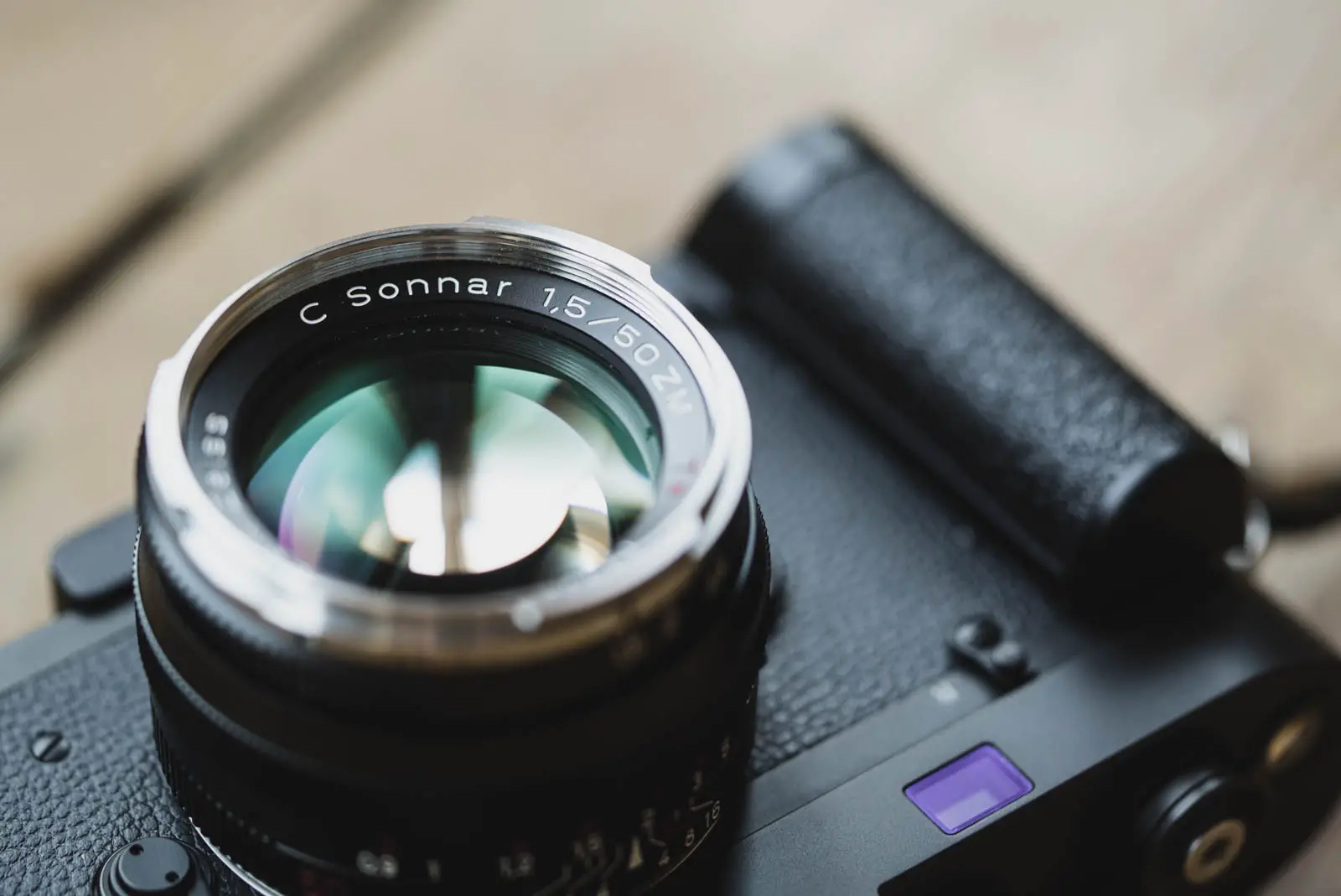
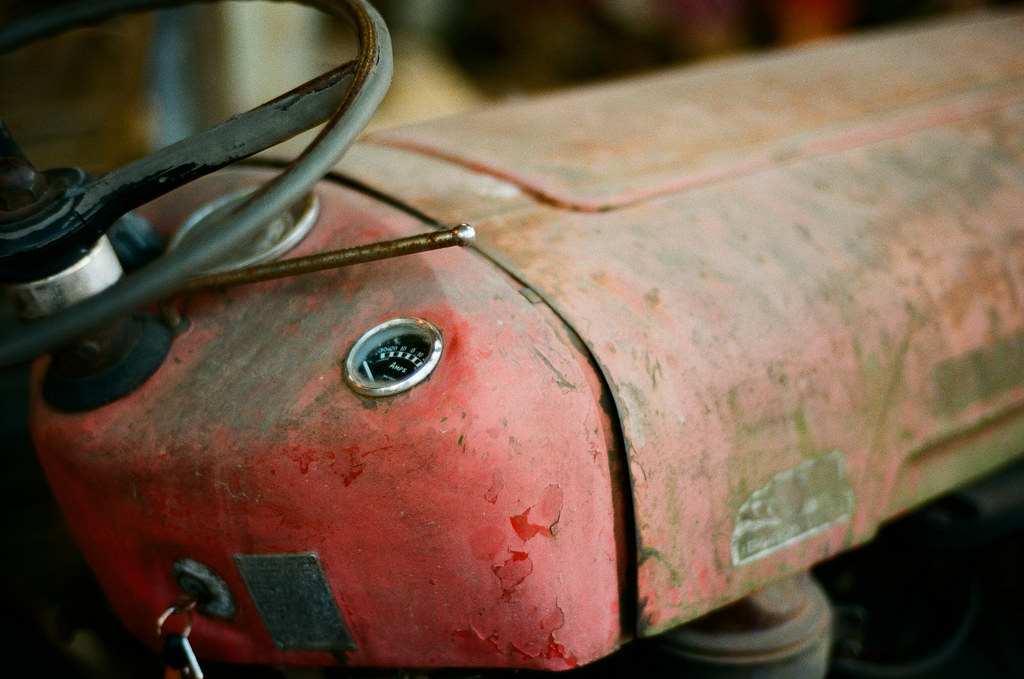






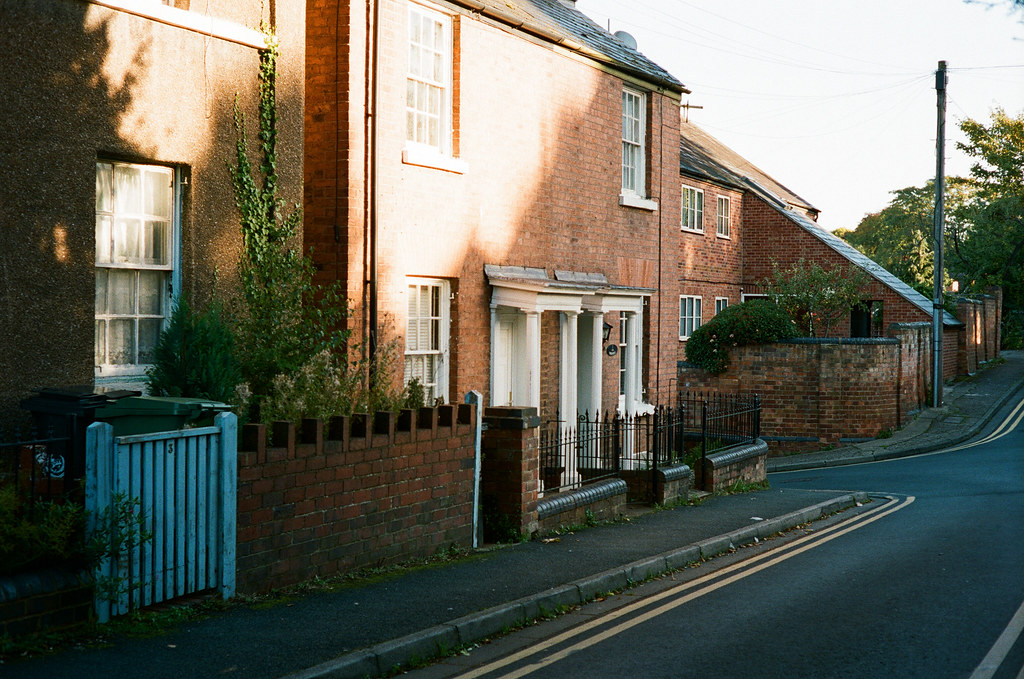



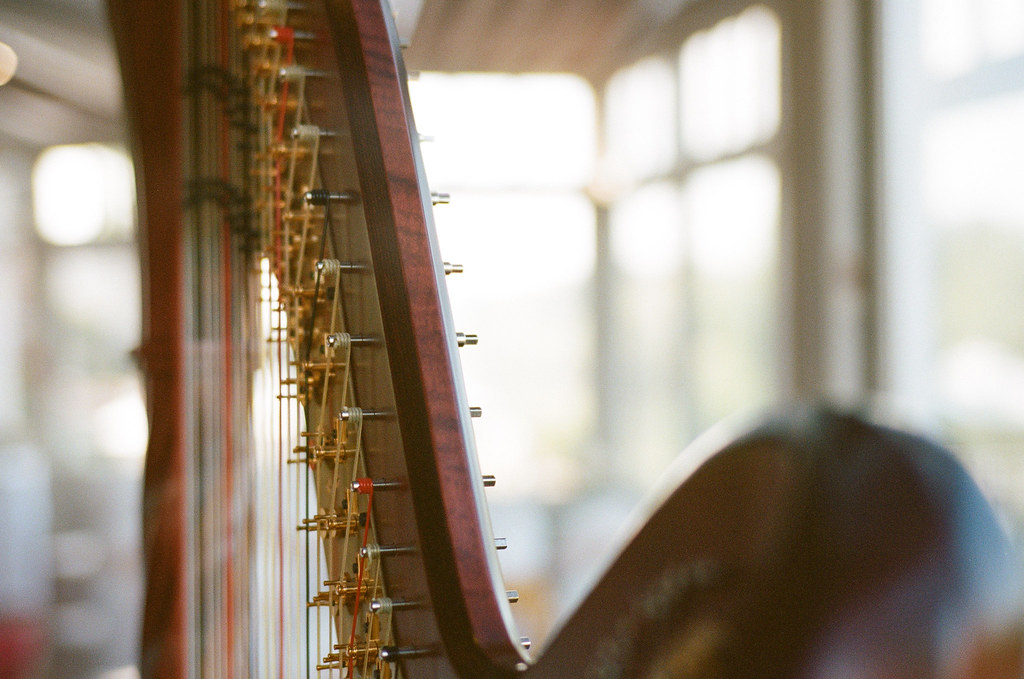
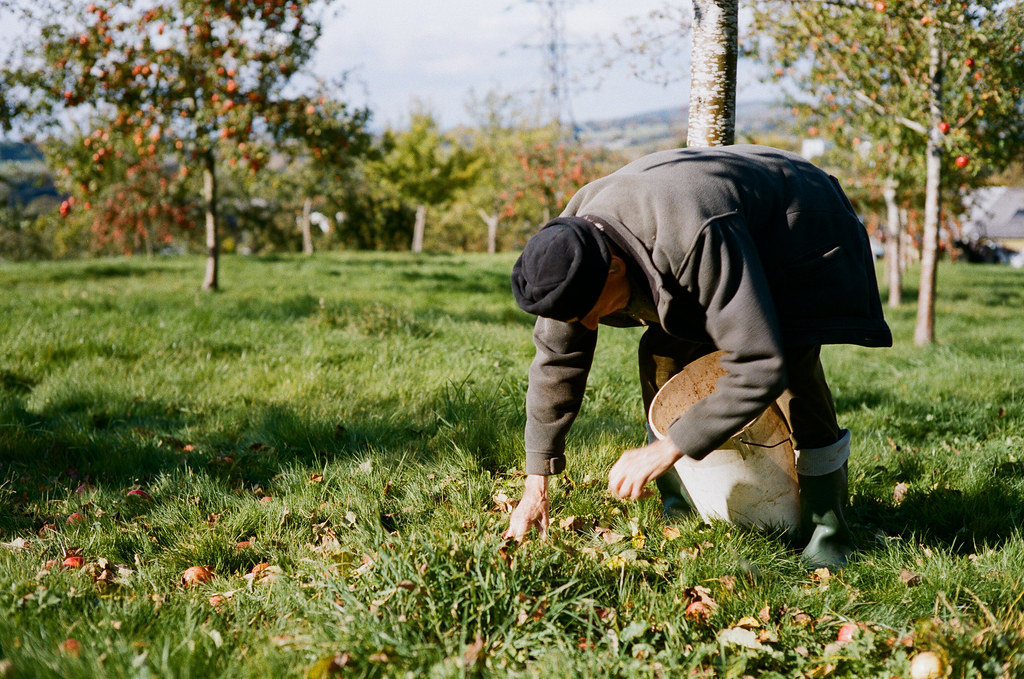
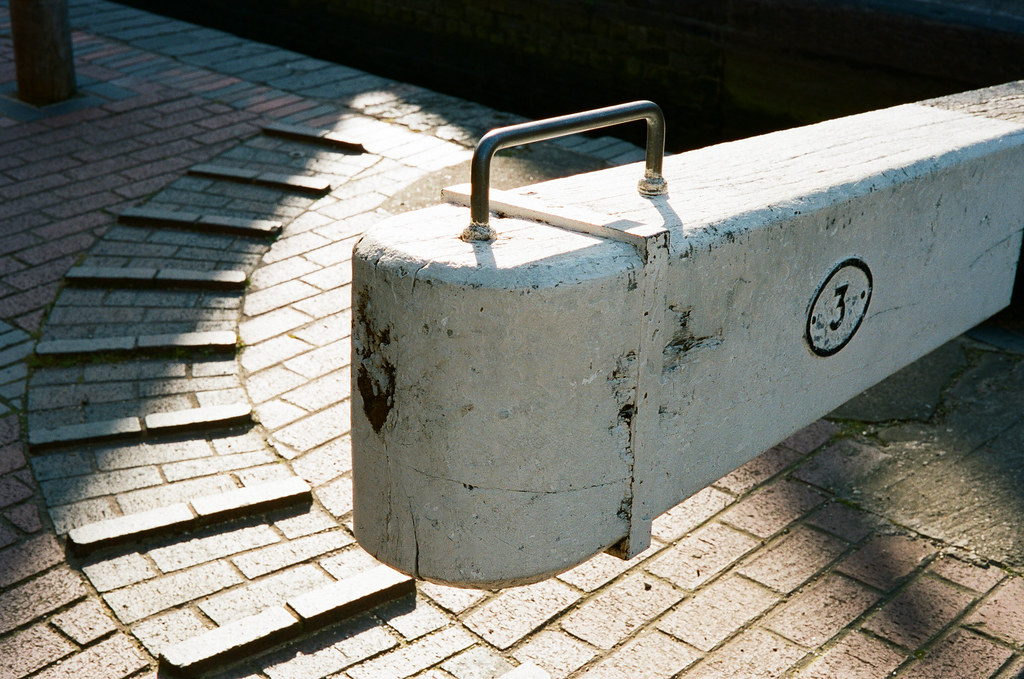
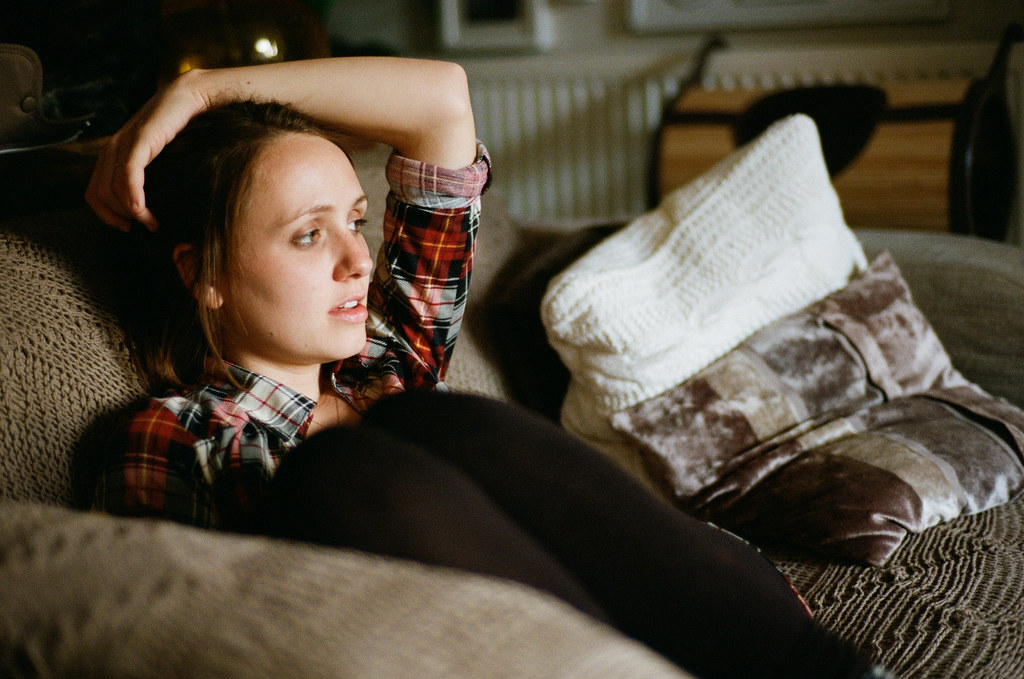


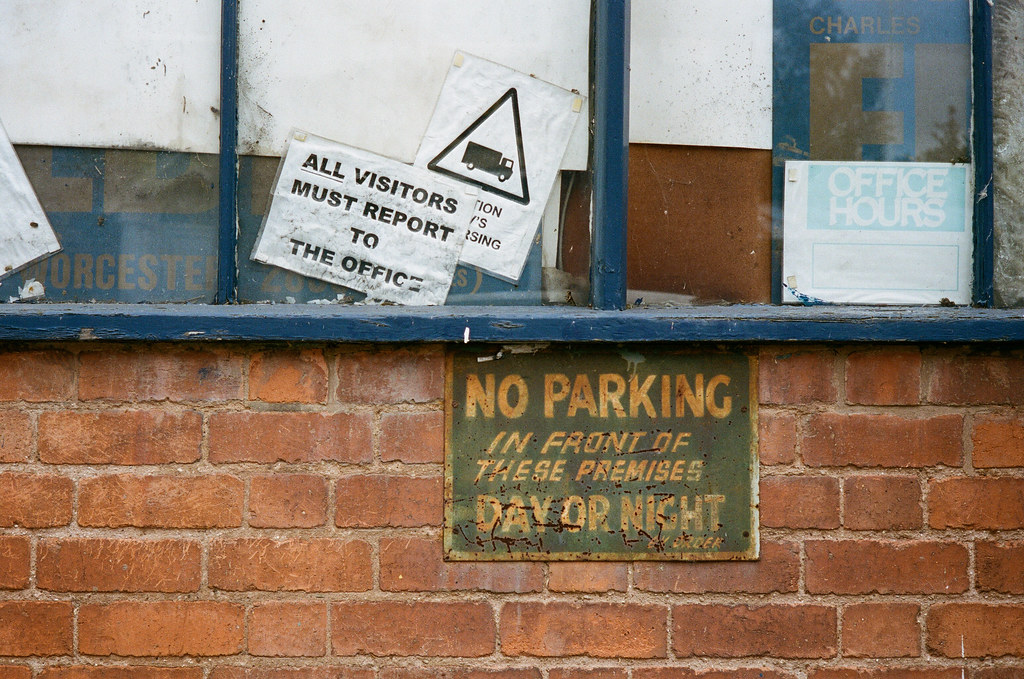
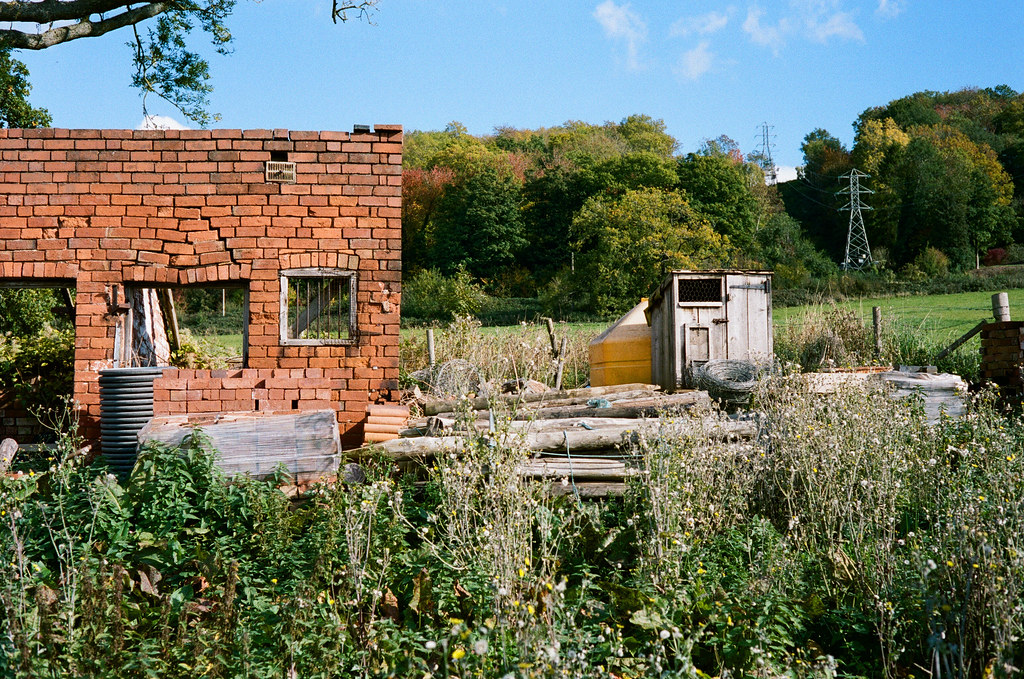



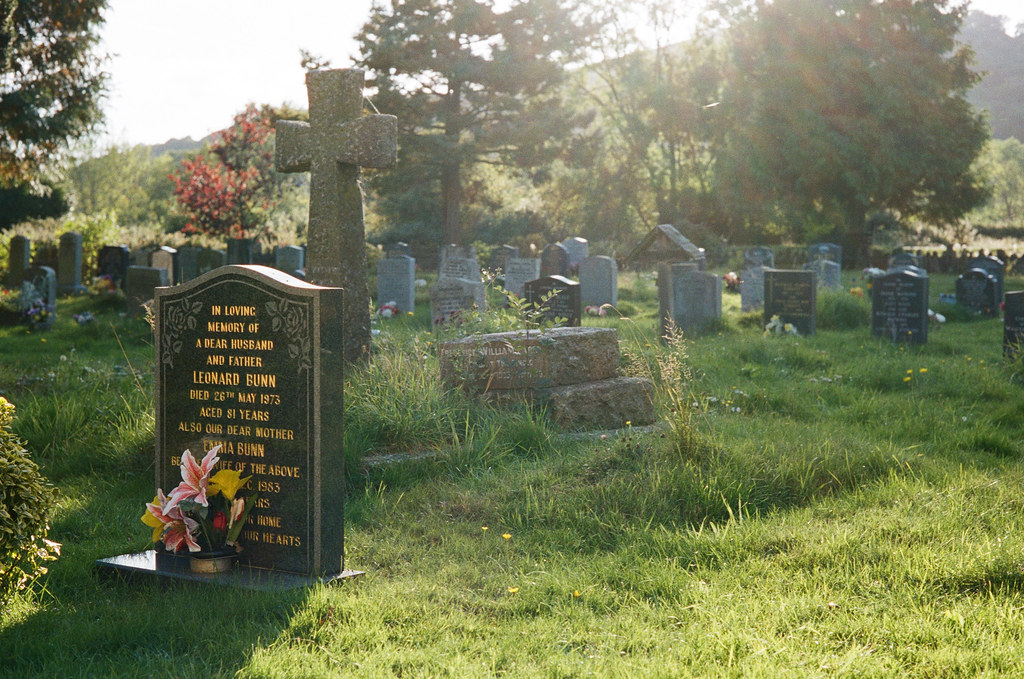

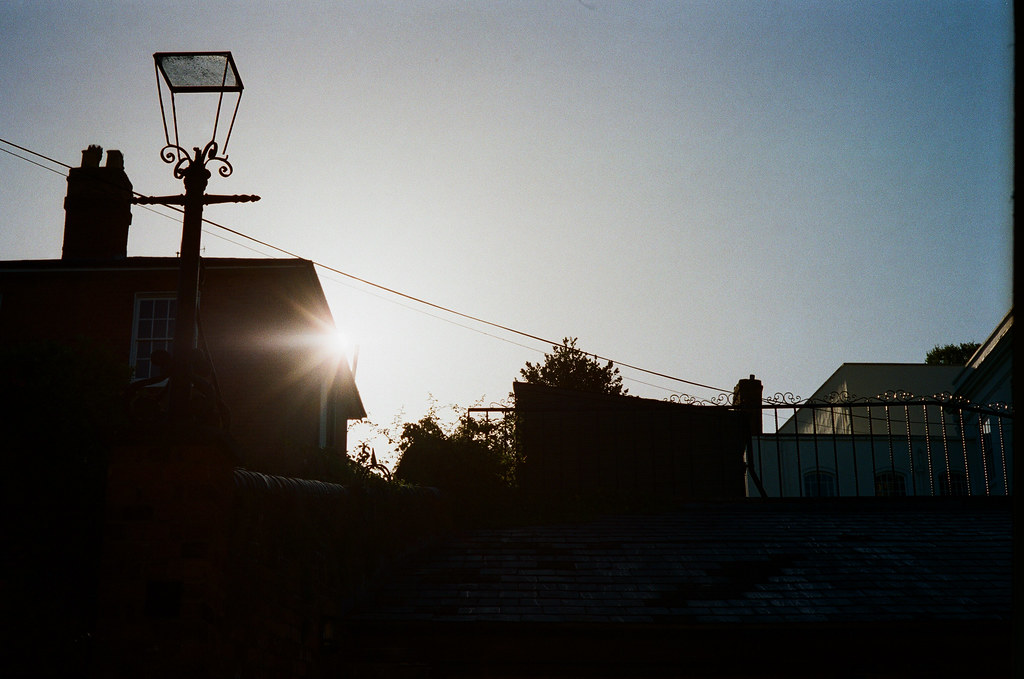
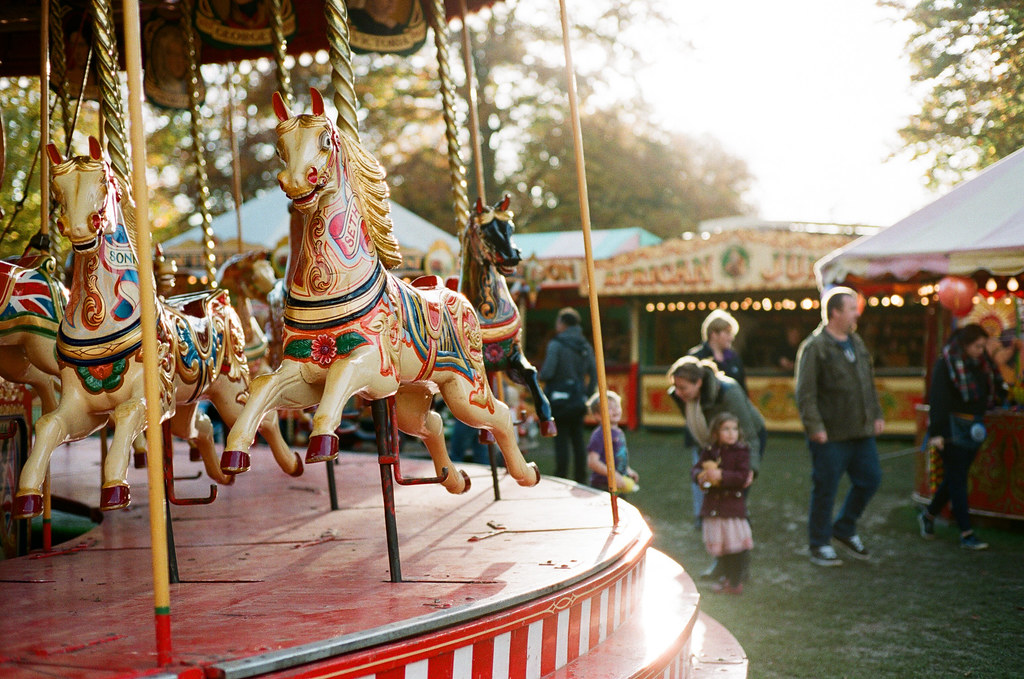

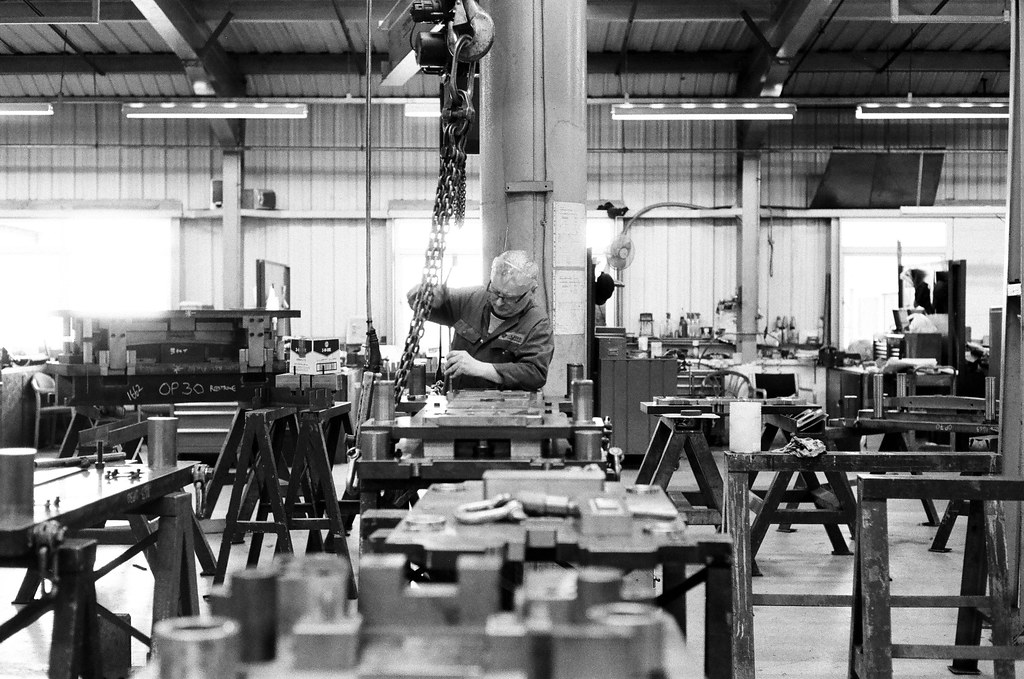
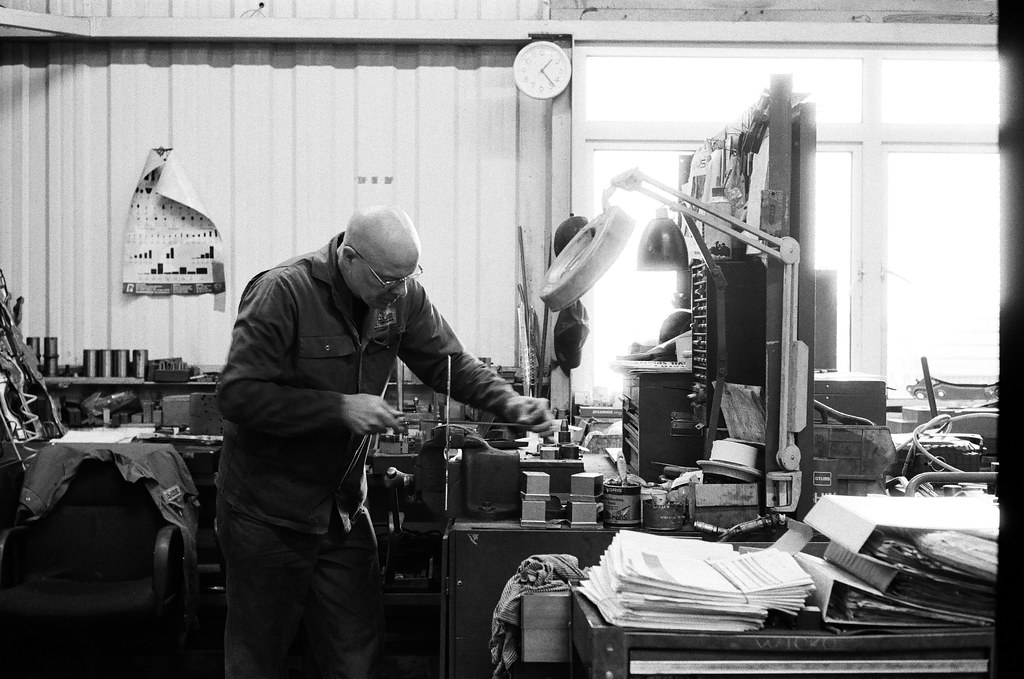
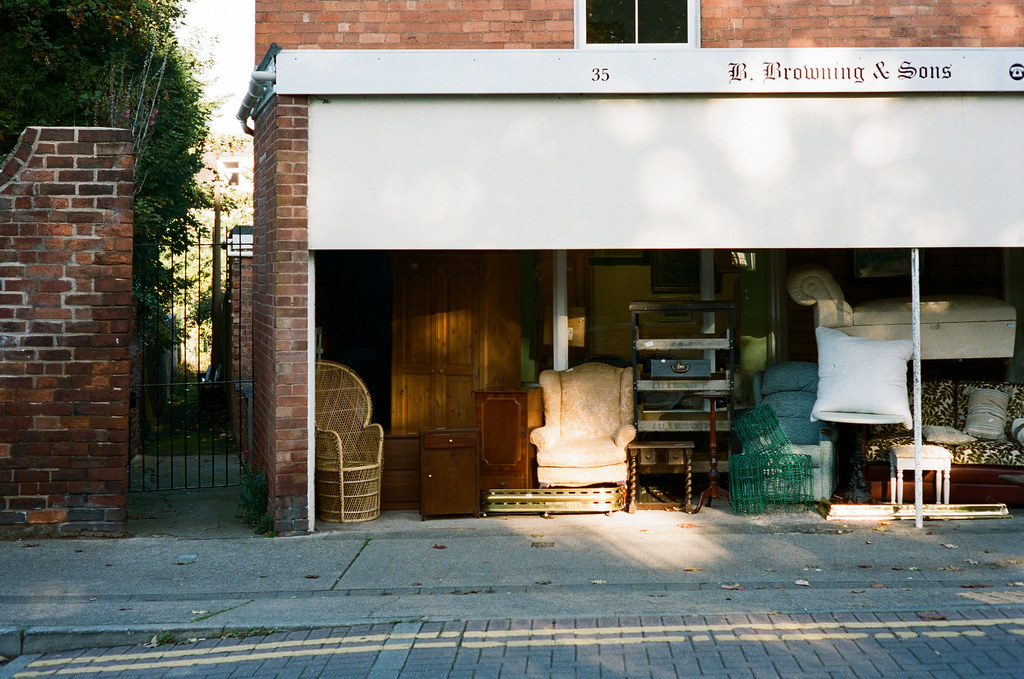



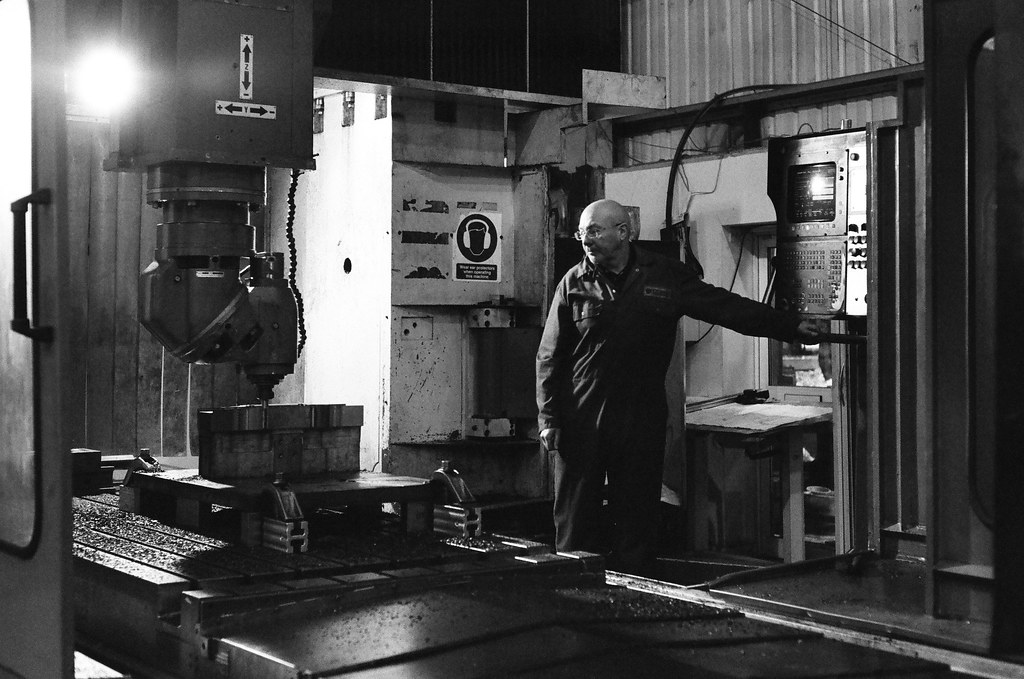










Comments
Karl on Zeiss 50mm 1.5 ZM C Sonnar Review
Comment posted: 22/11/2015
Comment posted: 22/11/2015
Debmalya on Zeiss 50mm 1.5 ZM C Sonnar Review
Comment posted: 22/11/2015
Comment posted: 22/11/2015
Comment posted: 22/11/2015
Comment posted: 22/11/2015
Blinx on Zeiss 50mm 1.5 ZM C Sonnar Review
Comment posted: 22/11/2015
Finding a lens you like makes life easier as you can get on with the photography and stop worrying about the demons placed in your head by marketing men! Besides, when was photography ever an objective medium?
Comment posted: 22/11/2015
Jean-Marc SCHWARTZ on Zeiss 50mm 1.5 ZM C Sonnar Review
Comment posted: 22/11/2015
Selon moi, j'aurai du mal à investir dans un tel verre sans certitude d'obtenir le point à sa plus grande ouverture. Mais ce verre m'intrigue quand même. Peut-être un jour, juste l'essayer.
Comment posted: 22/11/2015
Comment posted: 22/11/2015
Comment posted: 22/11/2015
Comment posted: 22/11/2015
Aukje on Zeiss 50mm 1.5 ZM C Sonnar Review
Comment posted: 22/11/2015
About the 3D-pop /ghosting discussion: a bit of ghosting can add to the 3D quality of a photo as well (to add to an endless discussion ;-) )
Comment posted: 22/11/2015
Gábor on Zeiss 50mm 1.5 ZM C Sonnar Review
Comment posted: 22/11/2015
I have really enjoyed your review about this lens. As you know I also use the C Sonnar as my primary lens and it seems that we approach this piece of glass in a rather similar way. It all boils down to the expectations, and if you are realistic about it, you can enjoy the character and all the goodness it can provide.
I mainly shoot it at f/2, close to the minimal focusing distance, and I have not experienced any focusing issues there. Your information from Zeiss just confirms my findings about focus shift. But like you when I try to compensate it I always overdue it. So my strategy is to shoot normally and if something feels risky like a portrait wide open, I take a second shoot. It is so easy to miss at large apertures anyways.
Just one comment to the flare resistance part of your review. To my knowledge it is not only the modern coating which helps this lens in this respect, but the design itself. There is relatively few air/glass boundaries in this lens therefore the reflections are less likely to occur. I have poorly coated Russian copies of the original Sonnar and they are performing reasonably well in this respect. The contrast in general is much lower, but flare is rarely a problem.
In any ways, thanks for your review, it must have been a lot of work and I always enjoy to read about my favorite lens. Both me and my wife liked the photos very much you used in this post as well.
Gábor
Comment posted: 22/11/2015
jeremy north on Zeiss 50mm 1.5 ZM C Sonnar Review
Comment posted: 22/11/2015
It shows that you are conflicted between the artist and geek. I'm glad you came down on the side that rendering is more important than "sharpness". After all, rangefinder cameras were not designed to be used for close up work. The parallax is a big problem there.Why do people lose sleep over these technicalities? OK so I know the answer, it is all about numbers. "Yes but this one goes up to eleven" !
I suppose you had to put together a technical explanation of the lens to satisfy the pixelpeepers but I bet most of us would be happy with: Hey it's a Zeiss Sonnar. A true classic design. It renders images beautifully and that front element is lovely on the front of my Leica. Who wants a poxy f2 when you can have a 1.5!
I was reading another review of this lens on another blog a while ago Mr Leica. It is the first and only time I'd come across the problem of focus shift. Why I wonder has no other lens had so much comment on this one esoteric 'problem'
I got the impression that most people who were writing about it were repeating what they'd heard and didn't actually know anything about it. Like you, I thought I'd better go to the source so contacted Zeiss. Here's the reply they kindly sent me.
"Thanks for your feedback.
Just a few facts about focus shift:
-all spherical lens types without special corrections suffer from a certain amount of focus shift caused by spherical aberration.
-lenses with high aperture (high speed, e.g. f/1.5) suffer more from this issue than slower lenses (e.g. f/2).
-lenses without floating elements design (e.g. Sonnar T* 1,5/50 ZM) show more focus shift at closer distances than at infinity compared to lenses with floating design
Rangefinder lenses with rangefinder coupling (e.g. M-mount) can only be adjusted to show correct focus with the rangefinder at a certain distance and a certain f-stop. The rangefinder of the camera cannot compensate the effects of focus shift. So every adjustment of the camera´s rangefinder and the lens is a compromize.
In practical use, this means:
-when using those lenses on cameras in live view mode (e.g. Leica M240, or adapted to a mirrorless camera) with pre-selected aperture value, the focus shift is no problem at all. The effects of the focus shift can directly be seen on the screen and the lens could be re-focussed before taking the picture.
-the out-of-factory adjustment of the C-Sonnar (together with a perfectly adjusted camera rangefinder) will show the following results:
about 1.5 cm front focus at f/1.5 and 1m focusing distance
perfect focus at f/2 and 1m focusing distance
about 2-3 cm back focus at f/2.8 and 1m focusing distance
We found that this out-of-factory adjustment is the best compromize for this lens type for nearly all typical applications.
Any different adjustment of the C-Sonnar is possible. So if the lens is adjusted for zero focus shift at f/1.5 and 1m, the back focus at f/2.8 (and stopped down further) will increase significantly, making it much harder to focus when stopped down.
So before considering an individual adjustment of a C-Sonnar lens, individual tests in typical applications with your individual camera body are essential.
With Best Regards
Bertram Hönlinger"
Pretty well as you said. We do agonise over possibilities that rarely if ever occur. As you said so well, it is the real world situations which count.
Look at Capa's iconic images of the D Day landings. I believe he used a Contax ii and probably the earlier version of the Sonnar 50. Who cares about perfection.
I too bought a Sonnar C to put on my Leica M2. On my second roll so haven't seen the results yet but I've been using Zeiss lenses for a very long time so I know I'll love it.
Voila, my rambling reply.
Comment posted: 22/11/2015
Comment posted: 22/11/2015
Comment posted: 22/11/2015
Comment posted: 22/11/2015
Comment posted: 22/11/2015
Comment posted: 22/11/2015
Sigfrid Lundberg on Zeiss 50mm 1.5 ZM C Sonnar Review
Comment posted: 22/11/2015
Comment posted: 22/11/2015
Daniel F on Zeiss 50mm 1.5 ZM C Sonnar Review
Comment posted: 22/11/2015
I got bashed when I went and bought the Summicron 35mm v4, when I for the same amount of money could buy something much sharper. I think, even if completely subjective, I dare to say I have never seen bokeh more pleasing when a little stopped down than from that lens. The lens can be a little soft wide open but it only adds great character. Especially on faces. Pair that with some T-Max 400 and you got fantastic highlights mixed with creamy bokeh.
I'm on the lookout for a 50mm to be mounted on my M3. This will definitely be on the list.
Comment posted: 22/11/2015
Curt on Zeiss 50mm 1.5 ZM C Sonnar Review
Comment posted: 22/11/2015
Comment posted: 22/11/2015
Ray on Zeiss 50mm 1.5 ZM C Sonnar Review
Comment posted: 23/11/2015
Comment posted: 23/11/2015
Comment posted: 23/11/2015
Comment posted: 23/11/2015
Comment posted: 23/11/2015
Comment posted: 23/11/2015
Comment posted: 23/11/2015
Rasmus on Zeiss 50mm 1.5 ZM C Sonnar Review
Comment posted: 24/11/2015
Like you I'm not too interested in 'measured quality' as opposed to subjective quality and thus could be keen to try the Zeiss. I prefer the 35mm focal length though. Any recommendations for a similar look with a shorter lens?
Thanks,
Rasmus
Comment posted: 24/11/2015
Martin on Zeiss 50mm 1.5 ZM C Sonnar Review
Comment posted: 24/11/2015
FWIW, it's very nice mounted on a Sony Alpha and focused with focus peaking assistance where it exhibits great detail but preserves a strong "filmic" look.
Comment posted: 24/11/2015
Philippe BREYNE on Zeiss 50mm 1.5 ZM C Sonnar Review
Comment posted: 03/01/2016
I came across your review a few weeks ago ( I am following your blog...). I have the 50 Sonnar since a few months and had mixed feelings about it due to the intricacies of using it at the widest aperture and close range: it worked most of the time but not every time and that was frustrating...
After reading your review, I started using the lens at f2 instead of f1.5 when needing a wide aperture and the miracle happened for me, the focus is bang on every time with my M9, the 3D pop is still present and it is now permanently attached to my M9 together with a big smile on my face when I use it...
Many thanks for understanding this lens so well and sharing your experience so clearly...
Regards,
Phil
Comment posted: 03/01/2016
Philippe BREYNE on Zeiss 50mm 1.5 ZM C Sonnar Review
Comment posted: 03/01/2016
Here is the link: https://www.flickr.com/photos/teosworld/albums/72157660801191263
Some of the pictures were taken with a Sony A7Rii and others with a Leica M9, so it's all digital stuff...
Comment posted: 03/01/2016
I am Hamish Gill and this is why I shoot film | EMULSIVE Culture, Featured, Filmswap, Interviews on Zeiss 50mm 1.5 ZM C Sonnar Review
Comment posted: 14/02/2016
John on Zeiss 50mm 1.5 ZM C Sonnar Review
Comment posted: 15/02/2016
Comment posted: 15/02/2016
Yannick Khong on Zeiss 50mm 1.5 ZM C Sonnar Review
Comment posted: 06/03/2016
Comment posted: 06/03/2016
Russell on Zeiss 50mm 1.5 ZM C Sonnar Review
Comment posted: 18/03/2016
I'm looking at moving to 35mm from medium format and have been considering the Leica m2 or m5, can I get your thoughts on these two cameras? Apologies this isn't related to your post but I've already decided on getting the 50mm Sonnar (your review confirmed this too). I've used Zeiss in medium format before and love it. Thanks
Comment posted: 18/03/2016
Comment posted: 18/03/2016
Comment posted: 18/03/2016
Comment posted: 18/03/2016
Comment posted: 18/03/2016
Comment posted: 18/03/2016
Comment posted: 18/03/2016
Mahesh on Zeiss 50mm 1.5 ZM C Sonnar Review
Comment posted: 01/05/2016
Comment posted: 01/05/2016
Bruce Gill on Zeiss 50mm 1.5 ZM C Sonnar Review
Comment posted: 12/05/2016
I've FINALLY pushed the button on one of these. Like you, I've hovered over the "add to basket" button for ages now. I've read and re-read your review, and all the others over and over... It's only been your realistic approach that made finally give in. I KNOW I love the way this lens renders light but always got put off. So, thank you!
Funny as I bought the V4 35mm Summicron over the modern ASPH versions because of that creative side of my brain... Yet this ones taken way more persuasion!
Thanks again boss :)
Comment posted: 12/05/2016
Comment posted: 12/05/2016
Comment posted: 12/05/2016
Comment posted: 12/05/2016
Comment posted: 12/05/2016
Gareth Davies on Zeiss 50mm 1.5 ZM C Sonnar Review
Comment posted: 02/08/2016
Comment posted: 02/08/2016
Comment posted: 02/08/2016
Comment posted: 02/08/2016
Leo Sze on Zeiss 50mm 1.5 ZM C Sonnar Review
Comment posted: 10/08/2016
Comment posted: 10/08/2016
Comment posted: 10/08/2016
Andrew on Zeiss 50mm 1.5 ZM C Sonnar Review
Comment posted: 09/11/2016
I used to own this lens, sold it, regretted selling it and have just purchased it again. I also own an uncoated original made in 1937 and expertly adapted to Leica, the newer Lomo-Zenit recreation (New Jupiter 3 ) and both German Zeiss and Russian Jupiter 8 f/2 50mm Sonnars. They are all superb, but the ZM C Sonnar is the easiest to use, masks its flaws the best while somehow preserving all of the character that makes a Sonnar, a Sonnar.
Great review and some great images.
Thank you.
Comment posted: 09/11/2016
Comment posted: 09/11/2016
Comment posted: 09/11/2016
Comment posted: 09/11/2016
Steve Burge on Zeiss 50mm 1.5 ZM C Sonnar Review
Comment posted: 14/11/2016
I also dithered for ages before committing to the ZM 50/1.5. I bought the Biogon 35/2.8 and the Planar 50/2 (and lots of other stuff that I shouldn't have) while hesitating. If I'd taken the plunge earlier I wouldn't now have a drawer of underused lenses.
It's definitely the lens I like and use the most. I can (and do) use it for almost everything, on both film (M2 & M3) and digital (XPro1 then A7r). If I were limited to just one lens this would probably be it (and if just one camera it would be on the M2 - although I'd hide my Rollei 35s somewhere secret too). It's very versatile and seems to see the world as I do. I really like how it changes character through the aperture range and in different conditions, but it always seems to have character.
Comment posted: 14/11/2016
Comment posted: 14/11/2016
Comment posted: 14/11/2016
Comment posted: 14/11/2016
Comment posted: 14/11/2016
Paul on Zeiss 50mm 1.5 ZM C Sonnar Review
Comment posted: 14/12/2016
Comment posted: 14/12/2016
Matty Kay on Zeiss 50mm 1.5 ZM C Sonnar Review
Comment posted: 04/03/2017
Comment posted: 04/03/2017
Comment posted: 04/03/2017
The Voigtlander f/3.5 50mm VM Heliar - a review of two halves - 35mmc on Zeiss 50mm 1.5 ZM C Sonnar Review
Comment posted: 16/09/2017
Ming on Zeiss 50mm 1.5 ZM C Sonnar Review
Comment posted: 07/03/2018
Finally I bought a Sonnar and mounted on a M7 and M3. And when I received my scans and prints, I realized that all this focus shift issues I read in the internet, did not become true.
Well, maybe I have a unique copy...haha..
But seriously, What a wonderful lens. Color rendition warm , smooth bokeh...and really, no issues with unsharp pictures.
I recommend, get the lens yourself and try it out. In real life, you will probably not see these issues. Because you will have unsharp pictures with Summicron and Summilux as well in some situations too.
Just my 2cent
Scott Edwards on Zeiss 50mm 1.5 ZM C Sonnar Review
Comment posted: 04/06/2018
Comment posted: 04/06/2018
Rollin Banderob on Zeiss 50mm 1.5 ZM C Sonnar Review
Comment posted: 24/06/2018
Comment posted: 24/06/2018
Rollin Banderob on Zeiss 50mm 1.5 ZM C Sonnar Review
Comment posted: 16/07/2018
So far love how the out of focus areas are not distracting - main reason bought this lens. And the lack of ghosting and veiling of older options.
I'm not a thin DOF shooter, more f/2.8-4 indoors as aim for layers of content and context, however older 50's had distracting bokeh which sent me looking for this lens. Have seen hints of the beautiful overall rendering - very excited to keep shooting it.
Pleasantly surprised how the lens profile in Lightroom really only lightens the corner vignetting so the lens seems very, very well corrected overall. And the vignetting is pleasant enough a lot of the time not using the profile at all.
I like a proper focusing tab on wide angles for tactile reference when switching quickly and without looking between zone focusing areas, but not going to be zone focusing much with a 50mm, so handle it like an SLR 50 and I like the feel of it.
I am concerned about the chromatic aberrations (I'm digital only) as I find the Lightroom dropper half the time won't select it, so not as easy to correct as I always read. Also, really don't like the chrome front - personal preference is a low-key look for my gear. Going to get a UV filter, or just the black filter ring or a step-up ring to cover it from the front. In my SLR days ran most of my lenses with hoods and no lens caps as I hate fiddling with caps, but don't like the idea of the over-priced Zeiss hood blocking part of my view. If anyone is using the hood like to hear if it is cut-out and thin enough that they find they don't notice it through the finder.
Comment posted: 16/07/2018
Lawrence on Zeiss 50mm 1.5 ZM C Sonnar Review
Comment posted: 09/10/2018
I was seeking a prime lens around ~24mm and being on Canon Eos system had distilled the options down to Zeiss 21 2.8 distagon vs Canon 24 3.5 TSE2. I went back & forth reading reviews and comments from owners of both, looking at photos on Flickr & POTN lens groups for each, and couldn’t decide. Analysis paralysis had struck!
My deadlock was broken when one appeared secondhand at a good price, so I bought it. I can’t recall which one I bought, because within a month the other one popped up secondhand at the right price again, so having saved on the first purchase, I evened up with both, with the plan of shooting with both to help me decide what to keep.
I did a back-to-back shot and examined the results at home on screen.
The 24TSE2 was technically the better lens (tested untilted & Unshifted), there was little to no sign of vignetting (the Zeiss 21 distagon vignettes very significantly), not just the corners, but the edges (on full frame) where impressively sharp on the TSE2 to the point I couldn’t really see any significant difference between centre frame and corners even wide open....the Z21 by comparison was poor in the corners....but still good vs other wide angles I’ve owned & used in the past. the colours from the 24TSE2 seemed a close portrail to real life, the Z21, not so much.
So, no brainer then? Practically any technical aspect you cared to compare the 24TSE2 came out top, and not by a slight margin, so keep that & sell the Z21.....well not so fast or easy. When you stopped the close technical examination, and stepped back a fraction and just looked at the photos both produced, as most folk normally would do, then an odd thing happens. The Zeiss 21 distagon 2.8 produced the subjectively more pleasant images. A lot of this was down to the rich deep contrast, it may not have been that accurate to what my eyes/brain recall the scene looking like, but it was a very nice rendering none the less.
So, I was still none the wiser, and have ended up keeping & using both lenses.
For stitched panos the 24TSE2 is the lens I’d go for, plus it has the tilt/shift flexibility when required, and it focuses very close too. But for a lot of other shooting, I’d pick the arguably ‘imperfect’ Zeiss 21 2.8 distagon......so I rather ‘get’ the love of the imperfect Sonnar here!
Comment posted: 09/10/2018
Voigtlander 50mm f/2.5 Color-Skopar Leica Thread Mount Lens Review - 35mmc on Zeiss 50mm 1.5 ZM C Sonnar Review
Comment posted: 21/10/2018
A few frames with a Konica Hexar RF, Voigtlander 50mm f/1.1 and Kodak Portra 800 - 35mmc on Zeiss 50mm 1.5 ZM C Sonnar Review
Comment posted: 18/02/2019
A few frames with a Konica Hexar RF, Voigtlander 50mm f/1.2 and Kodak Portra 800 - 35mmc on Zeiss 50mm 1.5 ZM C Sonnar Review
Comment posted: 18/02/2019
Shooting Leica Rangefinder Cameras with 3rd-Party Lenses is not a Crime! - 35mmc on Zeiss 50mm 1.5 ZM C Sonnar Review
Comment posted: 15/04/2019
Shooting the new Voigtlander Ultron 35mm f/2 ASPH in Hong Kong – By Ong Sien Hong - 35mmc on Zeiss 50mm 1.5 ZM C Sonnar Review
Comment posted: 24/04/2019
Zeiss ZM M-Mount Lenes - The Lenses I "Need", and not just "Want" - 35mmc on Zeiss 50mm 1.5 ZM C Sonnar Review
Comment posted: 08/12/2019
The 7Artisans 75mm f/1.25 and the confusion of “want” over “need” - 35mmc on Zeiss 50mm 1.5 ZM C Sonnar Review
Comment posted: 09/12/2019
EMULSIVE interview #41: I am Hamish Gill and this is why I shoot film | EMULSIVE on Zeiss 50mm 1.5 ZM C Sonnar Review
Comment posted: 09/01/2020
Erik Danielson on Zeiss 50mm 1.5 ZM C Sonnar Review
Comment posted: 18/04/2020
As it is, it's only available as a sealed unit with a sensor already attached, as part of a dead system that had little commercial success- the Ricoh GXR A12 50mm Macro unit. Consequently few will ever use it, and few have reviewed it. The actual optic is 33mm and f2.5.
I didn't buy it for the lens character, in fact, I hadn't read much about it except that it was of good optical quality. I just wanted the small size, nice Ricoh UI, and macro focusing. Once I thought I would be a photographer but today I'm actually a plant ecologist, and I use my camera mainly as a field notebook, shooting hundreds of frames without "photographic" intent in a given day of surveying. The resulting "notes" from this lens are so beautiful that I find myself framing images for their own sake again more and more often. Your experience with the lens in this review echoed the reasons I love to shoot with that little GXR. Maybe that Ricoh 33mm f2.5 design is the close-focusing, digital-obsolescene spiritual sibling of the 50mm C Sonnar.
Comment posted: 18/04/2020
Our Favorite Lenses as Chosen by Your Favorite Camera Geeks on Zeiss 50mm 1.5 ZM C Sonnar Review
Comment posted: 24/04/2020
Fajar Rachmadi on Zeiss 50mm 1.5 ZM C Sonnar Review
Comment posted: 28/04/2020
Long time lurker here. I enjoyed reading your article. Just wanna ask, if you ever used this lens on a Hexar? Is it still shift focus at f1.5?
Thanks
Comment posted: 28/04/2020
Mihai Cioroba on Zeiss 50mm 1.5 ZM C Sonnar Review
Comment posted: 27/10/2020
what a wonderful review, well done! I am absolutely fascinated by the way this lens renders and I couldn't really find this quality in others. I'm recently finding it in my new 7artisans M 35mm f/1.4, it's internal focus and has this lovely pop straight from wide open.
Since it's new and very comparable, it would be awesome to do a comparison with Voigtlander Nokton 50mm f/1.5 II Aspherical, ideally both SC and MC versions. The new VM seems to be quite high quality but I wonder if it has the magic that we here see in Sonnars or if it's more modern in rendering.
All the best,
Mihai
Comment posted: 27/10/2020
John M Austin on Zeiss 50mm 1.5 ZM C Sonnar Review
Comment posted: 30/12/2020
I've enjoyed reading your blogs about the Leica and various M-mount lenses (particularly the 50mm sonnar). I have a 1950's era Zeiss 50mm sonnar f1.5 (Jena) which I am just now discovering to be a gem. It seems that they haven't ruined the lens formula in the 50 years between mine and yours.
By the way, your kids are so adorable and your trouble-n-strife appears to be a very fine woman (from the few pictures you have posted). Why mention that? Because in my photographic life, I've taken more pictures of my sons than I can count while my own strife ducks out of the picture when I aim the camera at her. So you're doing something right!
P.S. As soon as anyone mentions "bokeh" in any context and for any reason, I roll my eyes and (think of Dr. Strangelove here) do my best to keep my hand to reach out on its own, and slap them across the face. As you so eloquently said, if you're focusing on the "bokeh" of a picture, you are entirely missing the point of the picture.
John Austin
Comment posted: 30/12/2020
John M Austin on Zeiss 50mm 1.5 ZM C Sonnar Review
Comment posted: 30/12/2020
John McCaine Austin
Comment posted: 30/12/2020
Natan on Zeiss 50mm 1.5 ZM C Sonnar Review
Comment posted: 12/05/2022
Comment posted: 12/05/2022
Michael Wallace on Zeiss 50mm 1.5 ZM C Sonnar Review
Comment posted: 31/10/2022
I use it on my MP and am constantly amazed at the results. It's almost a permanent fixture. The pictures actually have a deep realism...and that 3D pop! I find mine to be extremely sharp but rarely find the need to go to f1.5.
Great article! Cheers!
Sean on Zeiss 50mm 1.5 ZM C Sonnar Review
Comment posted: 24/02/2023
I have owned a Zeiss Biogon 35mm f2 for over 10 years and love using it on both my digital Lumix S5 and my Leica M6. It is without doubt the lens I've owned the longest.
Years ago I stupidly sold a Summicron 50mm and have regretted it ever since so every now and then I consider replacing it with either the Zeiss 1.5 or the f2. But as you mention in this article, it's an on-going battle between the artistic side and the more clinical side as to which to choose, and I still can't decide.
I have a young daughter so often think the 50mm 1.5 would be the better option, but I also know I love sharper images over dreamy ones and that leads me to the 50mm f2.
I guess focus shift is only an issue on the Leica as with focus peaking on a mirrorless camera you can compensate immediately?
Comment posted: 24/02/2023